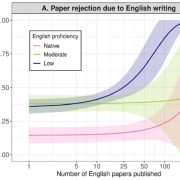Write, review and submit
A brief discussion for the beginners about preparation and submission of scientific articles
To the students and fellows, who are a little bit confused about journals and paper submissions
There exist some definite gaps “from performing of an experiment to the formulation of a hypothesis”. It is not necessary that a person good at lab work must be an expert in scientific writing too.
Besides writing a paper, incomplete knowledge about paper submission and fear of its rejection are the major hurdles in publication. This article is, therefore, an attempt to emphasize some ground facts about academic writing and guide for those students (beginners) who are afraid of correspondence.
Writing a paper does not mean necessarily you have to collect a very large quantity of data or write complex scientific sentences constituting many formal words. Instead, the way you present your research outcomes. You just need to be natural and focused. Either you are planning to write a review paper, an opinion, a short communication, or a research paper, the paper submission process is almost the same for every type of paper (with some minor differences). I am trying here to explain a brief and simple systematic procedure for paper submission, which might be helpful for novices.
1. The selection of a journal
First important step is to search for a suitable scientific journal for your article. The paper submission is not a default process, that is, you write a paper and submit it anywhere, but it is a selective method with many specifications. Hence, one should be precise in selecting a journal. The best way to find a suitable journal is using the online journal finder tools/websites, where you just need to paste the title and abstract (of a manuscript) in the respective search column and the journal finder will provide you a list of relevant journals (along with the percentage of acceptance probability).
- Registration or creating a journal account
Once you selected an appropriate journal, directly open the primary webpage of that journal, instead of approaching it through a third channel (it might waste your time). Now you need to be registered with the selected journal, but before being registered, read the “journal’s aims and scope” carefully to cross-check the relevancy of the journal with paper under consideration.
3. Preparation of manuscript
After signing in to your journal’s account read the author’s instruction page thoroughly, and format the manuscript as per the given instructions. I believe this is the most important and time taking step. The editor, who first receives your paper, has complete authority to reject if you submit a poorly formatted article (especially the wrong citation style). I prefer to use endnote for putting references in articles because this tool is convenient and quick. Simply import the journal’s endnote style from the reference section (given in the author’s guidelines) and update the citation style in the MS word file of the manuscript. Furthermore, prepare the supplementary files, figures, tables, etc according to the given criteria. Some journals need a “whole document submission” (all files included), while the majority require submission in form of separate files (of figures, tables, and script). So, prepare the files accordingly.
4. Writing a cover letter to the editor
Congrats! You have prepared your manuscript in the light of given instruction; you are almost done with 75% of your task. Now write an outstanding covering letter to the journal’s editor, which answer the following questions:
- What is your submission about?
- Why the journal should consider your submission?
- What type of readers your paper will attract?
- What is significant or novel in your study?
A cover letter should be brief and constitute two or three paragraphs. The letter must include the details of the corresponding author.
5. Final submission
Good job! You are now ready to go for the final submission.
Submit your prepared manuscript files in the respective journal. Almost all the journals have a very easy channel of paper submission and you can easily upload the files in the required sections. For instance, the Wiley online publishing group, all their journals have a very smooth pattern of submission, first, you upload title and abstract, secondly, the files (main document and supplementary), then authors list, followed by the reviewer’s recommendations and finally review and submit the manuscript. Being a student, you may find it difficult to recommend the reviewers yourself. I would suggest that consult your instructor, lab in charge, or supervisor for this purpose, they can better assign the reviewers (as per the institution’s policies). However, it is not compulsory that the editor will consider your suggested reviewers, these criteria vary from journal to journal.
The journal editor will send you a submission confirmation email, shortly after you submit the article. The editor evaluates your paper based on specific criteria (such as the novelty of work, methodology, results, statistics, figure quality, formatting, etc.). The submission then passed on to reviewers (two or three reviewers) and you will be notified by an email once your paper considered for review. The reviewers responded back to editors by giving their positive or negative remarks and all these evaluations together contribute to making the final decision on your manuscript. The whole procedure may take 2-3 months or more. It depends on the different strategies of each journal/publishing group. The journal editors and reviewers might be responding quickly to the submitted manuscripts nowadays, as everyone has sufficient time at home to accomplish the tasks (due to lock down).
I would like you to add further points or share your experiences with different journals regarding paper submission.
Let me share my personal experience; how I made the past home-packed days productive. Although, the isolation time (due to COVID-19 pandemic) cut me down from the workplace and social gatherings, but also provided me an opportunity to wrap up most of my pending writing tasks. I got published two research papers, one book chapter, completed my PhD thesis (few chapters) in the last three months. And working on two other papers in queue. Overwhelming…!!!
Concisely, I tried my best to take full advantage of home isolation and had fun with the writing keyboard. (Salisu, I. B., Shahid, A. A., Yaqoob, A., Olawale, A. S., Amin, A. B., & Sunusi, M. (2020). Detection of Genetically Modified Organisms Through Genomics Approaches.)(https://journals.plos.org/plosone/article?id=10.1371/journal.pone.0230519)(https://link.springer.com/content/pdf/10.2478/s11756-020-00514-x.pdf)
These “lockdown days” may be providing you a chance as well, to write all the stuff in your “to-do-list”. So, motivate yourself, stop fearing of rejections, and show your scripts to the world of academia.






Leave a Reply
Want to join the discussion?Feel free to contribute!